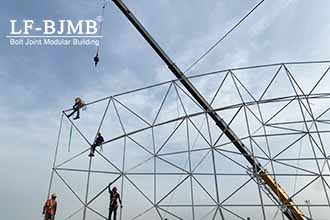The high strength and good ductility of steel enable steel structures to possess the characteristics of light self-weight, excellent seismic performance, and high load-bearing capacity. Additionally, steel structures can be fabricated on-site, resulting in a short construction cycle, and steel can be recycled. Therefore, steel structures are widely used in both domestic and international construction.
However, steel structures have a critical weakness: poor fire resistance. To ensure that steel structures maintain their strength and stiffness for an extended period during a fire, thereby safeguarding human life and property, various fire protection measures are implemented in actual engineering projects. Based on different fire protection principles, these measures are categorised into thermal insulation methods and water cooling methods. Thermal insulation methods can be further divided into spraying methods and encapsulation methods (hollow encapsulation and solid encapsulation). Water cooling methods include water spray cooling and water jet cooling. This article will provide a detailed introduction to various fire protection measures and compare their advantages and disadvantages.
Fire resistance limit and fire resistance performance of steel structures:
The fire resistance limit of a steel structure refers to the component in a standard fire resistance test, from the role of fire to the loss of stability or integrity, and the adiabatic stoppage of this resistance to the time the fire takes.
Although the steel itself will not catch fire, the steel’s material properties are greatly affected by the temperature. But at 250 ℃, steel’s impact toughness declines; at more than 300 ℃, the yield point and ultimate strength decrease significantly. Under actual fire, the load situation is unchanged, the critical temperature of the steel structure to lose the static equilibrium stability is about 500 ℃, while the general fire temperature reaches 800 ~ 1000 ℃. Therefore, under the high temperature of fire, the steel structure will quickly undergo plastic deformation, resulting in localized damage and ultimately causing the overall collapse and failure of the steel structure.
Steel structure buildings must take fire prevention measures to ensure the building has enough fire resistance. Prevent the steel structure from heating up rapidly to the critical temperature in a fire, and prevent excessive deformation and building collapse, so as to win valuable time for fire extinguishing and safe evacuation of people, and avoid or reduce the loss caused by the fire.
Fire protection measures for steel structures:
Fire protection measures for steel structures are divided into two categories based on their principles: heat insulation and water cooling. The purpose of these measures is the same: to ensure that the temperature of the components does not exceed their critical temperature within a specified time. The difference is that heat insulation prevents heat from being transferred to the components, while water cooling allows heat to be transferred to the components and then dissipated to achieve the same purpose.
Thermal insulation method
The thermal insulation method is divided into spraying and encapsulation methods based on the thermal insulation properties of fireproof coatings and encapsulation materials. The spraying method protects structures by coating or spraying fireproof coatings. The encapsulation method can be further divided into hollow encapsulation and solid encapsulation.
Spray Method
Generally, fireproof coatings are applied or sprayed onto the surface of steel materials to form a fire-resistant thermal insulation protective layer, thereby enhancing the fire resistance limit of steel structures. This method is easy to construct, lightweight, has a longer fire resistance time, and is not restricted by the geometric shape of steel components. It offers good economic and practical benefits and is widely applied. There are various types of fireproof coatings for steel structures, which can be broadly categorised into two types: one is thin-film fireproof coatings (Type B), also known as steel structure intumescent fireproof coatings; the other is thick-film coatings (Type H).
Type B fireproof coatings typically have a coating thickness of 2–7 mm. The binder is an organic resin, which has a certain decorative effect and expands and thickens at high temperatures. The fire resistance limit can reach 0.5–1.5 hours. Thin-film steel structure fireproof coatings have thin coatings, light weight, and good vibration resistance. For exposed steel structures indoors, lightweight roof steel structures, and when the fire resistance limit is specified to be 1.5 hours or less, thin-film steel structure fireproof coatings are recommended. H-type fireproof coatings typically have a coating thickness of 8–50 mm and a granular surface. The main components are inorganic insulating materials, which have low density and thermal conductivity. The fire resistance rating can reach 0.5 to 3.0 hours. Thick-film steel structure fireproof coatings are generally non-flammable, resistant to ageing, and have reliable durability. For concealed steel structures indoors, high-rise all-steel structures, and multi-storey factory steel structures, when the fire resistance rating is specified to be 1.5 hours or higher, thick-film steel structure fireproof coatings should be selected.
Encapsulation Method
1) Hollow encapsulation method: Generally, fireproof board or fire-resistant bricks are used to encapsulate the steel components along the peripheral boundary of the steel components. Most of the steel structure plants in the petrochemical industry use masonry fire-resistant bricks to wrap the steel components to protect the steel structure. The advantage of this method is high strength and impact resistance, but the disadvantage is that it occupies more space and is more troublesome in construction. Fire-resistant lightweight panels such as fiber-reinforced cement board, gypsum board, vermiculite board, etc., are used as a fire-resistant outer wrapping layer. The method of box-type wrapping for large steel components has the advantages of a flat and smooth decoration surface, low cost, small loss, no environmental pollution, aging resistance, etc., and has a good promotion prospect.
2) Solid Enclosure Method: This method typically involves pouring concrete to completely enclose the steel components. For example, the steel columns of the Shanghai Pudong World Financial Centre use this method. Its advantages include high strength and impact resistance, but its disadvantages include the large space occupied by the concrete protective layer and the complexity of construction, particularly on steel beams and braces.
Water cooling method
The water cooling method includes water spray cooling and water filling cooling.
Water Spray Cooling Method
The water spray cooling method involves installing an automatic or manual sprinkler system on the upper part of the steel structure. In the event of a fire, the sprinkler system is activated, forming a continuous water film on the surface of the steel structure. When flames spread to the surface of the steel structure, the evaporating water absorbs heat, delaying the steel structure from reaching its limit temperature. The water spray cooling method has been applied in the Civil Engineering Building of Tongji University.
Water-Filled Cooling Method
The water-filled cooling method involves filling hollow steel components with water. By circulating water within the steel structure, the heat absorbed by the steel itself is dissipated. This allows the steel structure to maintain a lower temperature during a fire, preventing it from losing its load-bearing capacity due to excessive heating. To prevent corrosion and freezing, rust inhibitors and antifreeze agents are added to the water. The steel columns of the 64-storey U.S. Steel Building in Pittsburgh, U.S., utilise the water-filled cooling method.



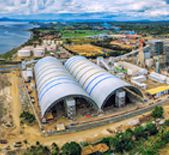
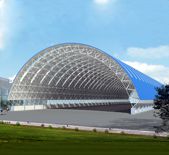
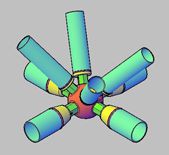
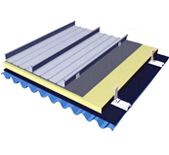
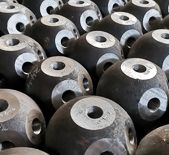



 About Us
About Us 2025-07-14
2025-07-14